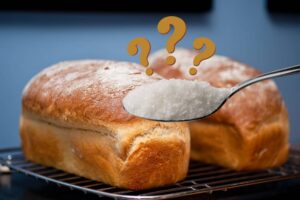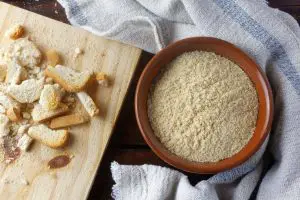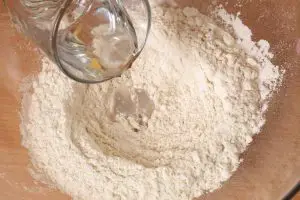Not everybody can attend baking classes that allow them to study everything there is to know about wheat and bread. For those who can’t or don’t want to attend baking classes, this post is designed to share some fundamental knowledge about dough and the loaves it produces.
Let’s look at the differences between lean and enriched dough. Are you aware of the distinction? No? Perhaps you’re familiar with the terms soft bread and hard, crusty bread. You’re well aware of the differences between those two.
Soft bread includes babka, cinnamon buns, brioche, and even monkey bread, frequently used for sandwiches. It features a delicate, almost pillowy inside and a soft crust. French baguettes, pizza crust, and no-knead crusty bread are examples of hard crusty bread.
Most baking classes refer to the different bread doughs by their culinary names – lean or enriched. So, what’s the difference between the two? After all, they’ve all got flour, yeast, water, and salt – what else is there? Let me tell you, there is still plenty to learn, so keep reading to discover the biggest differences between lean and enriched dough.
What Is Lean Dough?
A lean dough comprises only four components and has minimal to no fat or sugar. Flour, salt, water, and yeast are usually the only ingredients. It can contain sugar/honey or even oil, but only modestly.
When baked, the result is a dough with a crusty surface and an airier inside with some holes. When the dough is cooked, it makes a hollow sound. Pizza crusts, artisan bread, baguettes, and other crusty bread produced with a lean dough are common.
Lean doughs don’t need to be worked for extended periods. They may frequently be created using the “no knead” method, which involves dumping all of the ingredients into a dish, mixing them, and then covering them to ferment and rise.
What Is Enriched Dough?
The enriched dough begins as lean dough, but it has a larger fat, sugar, and dairy content. This dough has a sensitive crumb and a wonderfully soft inside. The dough is so soft that it billows and peels apart lovingly, earning it the nickname “billowy.”
So, why does adding fat or dairy to a dough alter the result so drastically from lean? Fat or dairy tenderizes the dough by covering and shortening the gluten strands, whether from milk, butter, or eggs. Fat also slows down yeast activity, necessitating a longer fermentation period, which results in a more flavorful dough.
The difference now is that adding fat, dairy, and sugar to the dough makes it heavier. Have you ever had a huge cinnamon bun that you swear weighs six pounds? That’s because it’s produced using enriched dough.
Different Ways to Make Enriched Dough
You may prepare the enriched dough in three distinct ways: sponge, straight, or high fat.
Sponge indicates that you start by combining the yeast with a tiny quantity of flour, sugar, and liquid, then letting it ferment for a few minutes before adding the remaining ingredients. This allows the yeast to hydrate rather than compete with the sugar for water, which aids taste development.
Straight implies you throw everything into the mixing bowl at once and start mixing. This is what you’d use if your enriched dough didn’t have a lot of fat in it.
To make the dough using the high-fat method, start with a sponge and add all of the other ingredients except the fat. You’ll knead the dough until it reaches the windowpane stage. To test the dough, take a tiny piece of dough and stretch it thin, similar to how you’d see through a pane of glass; the dough should be free of rips. If it passes that test, gradually add room temperature butter to the mixture.
Understanding the Ingredients
Enzymes From Milk
When working with milk, it’s critical to get it to 180 degrees Fahrenheit first. Milk includes an enzyme that weakens gluten; however, this enzyme is denatured and rendered inactive at high temperatures. Simply heat the milk in the microwave or on the stove until it foams and begins to boil. This is referred to as “scalding.”
Dough That’s Heavy
An enriched dough will be significantly heavier than its lean version due to the heavy contents of sugar, butter, and eggs. Using at least a piece of high-protein flour to offer the power needed to support this increased weight is very beneficial.
Doing the Initial Rise
After the dough has been combined, it must go through its initial rise, or bulk fermentation, known among bakers. This is frequently done at room temperature with lean bread. On the other hand, an enhanced variety prefers a long, cool fermentation, which allows the yeast to relax and take its time.
Some people leave it in the fridge for 12 hours, but if you’re on a tight deadline, try 45 minutes at room temperature followed by two hours in the fridge. This will, at the absolute least, assist in slowing down the fermentation process, but it will also help to chill the dough, which will aid in shaping.
Shaping Enriched Dough
Enriched dough’s texture is ideal for sculpting and shaping interesting patterns. Different forms of enriched bread are frequently connected with different varieties of enriched bread.
Many forms have long histories and significance, from the traditional challah braid to the French brioche a tète. The enriched dough is the most enjoyable because of the endless design possibilities. There’s no need to stick to the traditional forms.






